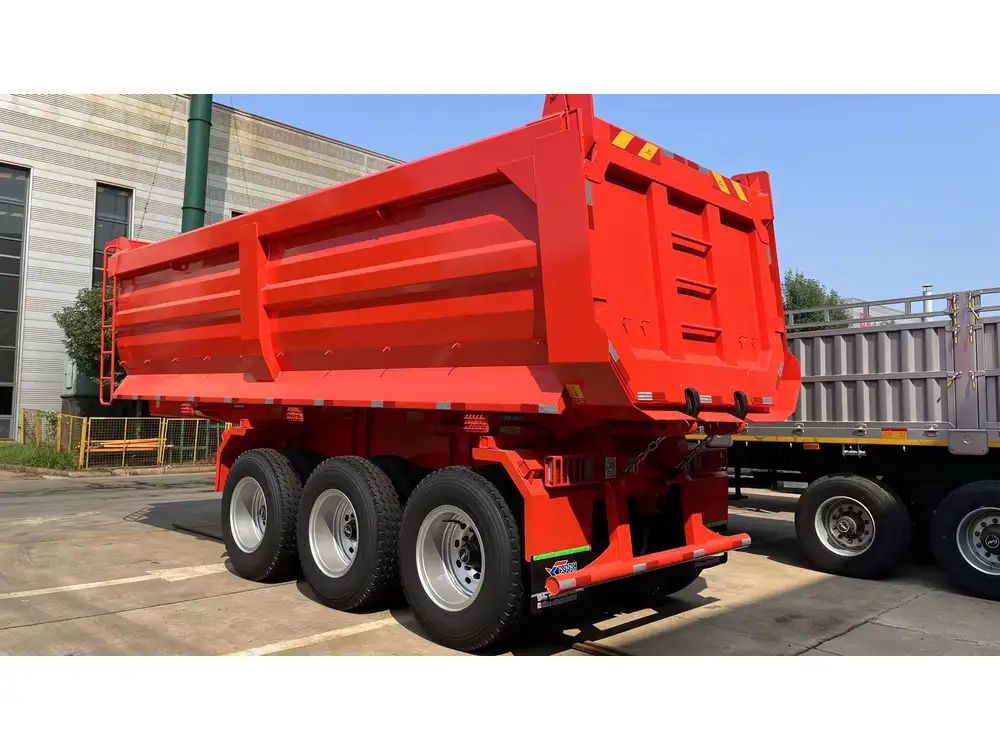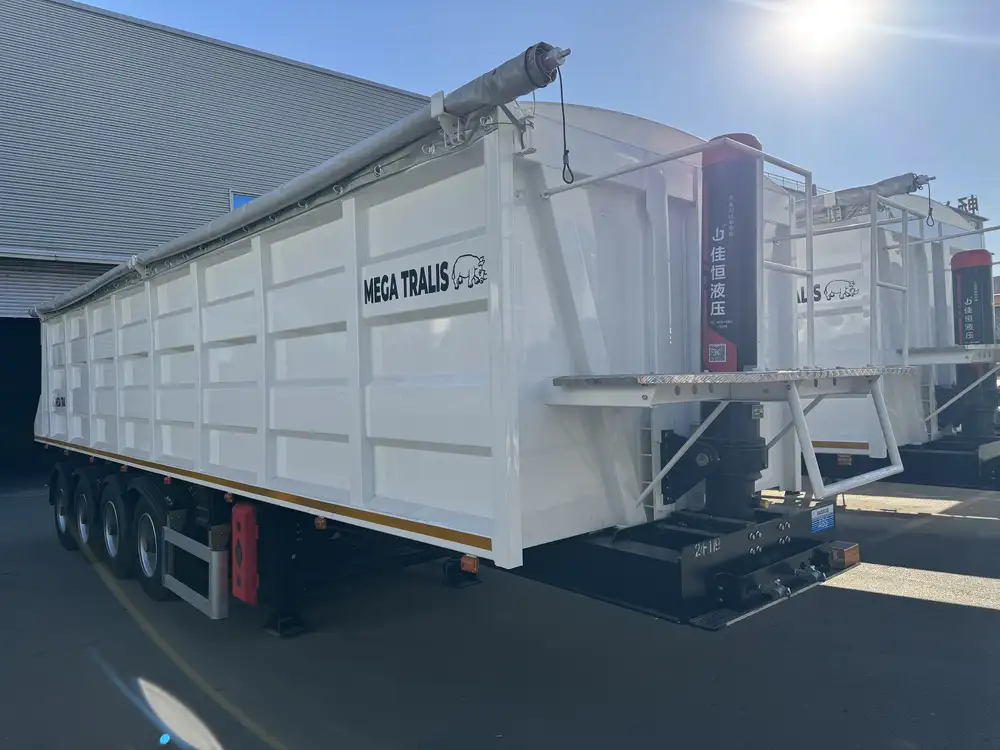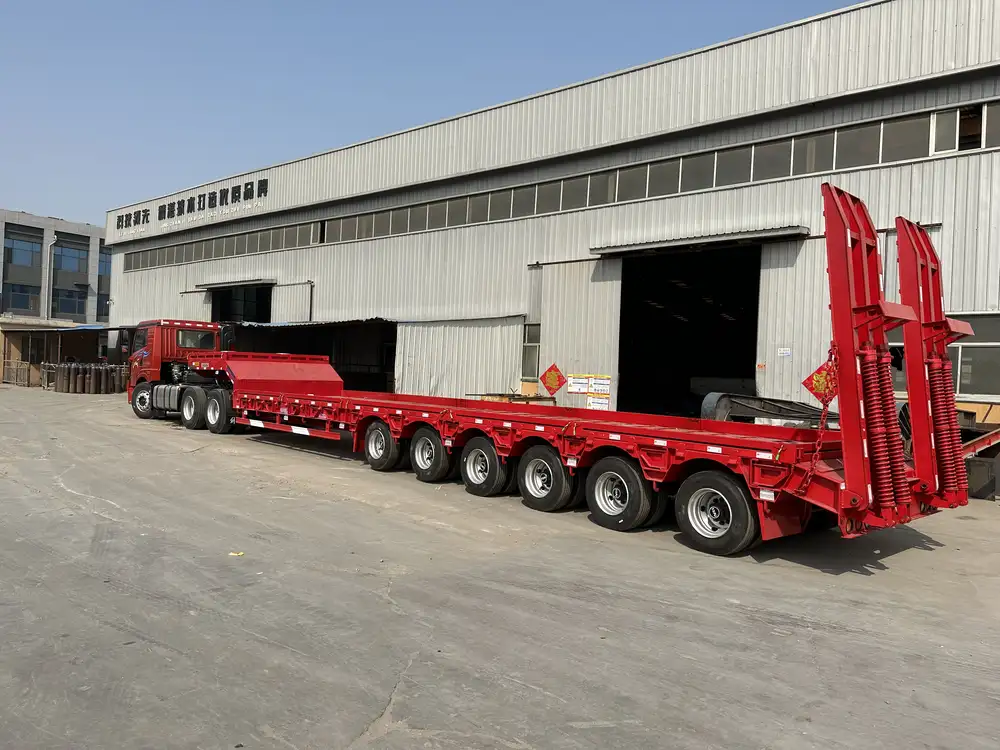Introduction to Semi-Trailer Operations
In the complex world of logistics and transportation, the efficiency of semi-trailer operations can significantly influence the entire supply chain. One of the topics that often arise in discussions surrounding semi-trailer companies is the utilization of stations. Understanding the interplay between semi-trailer companies and stations is critical for industry stakeholders aiming to optimize their processes, enhance service delivery, and boost overall operational efficiency.
What are Stations in the Context of Semi-Trailer Companies?
In the transportation sector, “stations” generally refer to designated areas or facilities where semi-trailers are parked, loaded, unloaded, maintained, or serviced. These can include distribution centers, freight terminals, and intermodal hubs. The functionality of these stations is pivotal in ensuring that semi-trailers can operate at peak efficiency.

The Essential Functions of Stations
Stations serve multiple crucial functions in the daily operations of semi-trailer companies:
Loading and Unloading: Stations provide the infrastructure necessary to load goods onto semi-trailers and unload them upon arrival. This process must be efficient to minimize downtime and maintain the flow of goods.
Maintenance and Repair: To keep semi-trailers in optimal condition, regular maintenance and repair services are conducted at these stations. This is especially important for ensuring safety and compliance with regulations.
Storage: Many stations offer storage facilities, allowing companies to temporarily store goods until they can be delivered or transported further.
Logistics Coordination: Stations often function as logistical hubs where scheduling, routing, and tracking of semi-trailers occur, ensuring seamless supply chain management.
Customer Service: Stations can serve as customer service points, facilitating communication between the company and its clients, enhancing customer satisfaction.
Key Advantages of Utilizing Stations
Increased Efficiency
Utilizing stations can lead to an optimized loading and unloading process, significantly reducing turnaround times. With dedicated personnel and equipment for these tasks, semi-trailer companies can achieve higher throughput, which is essential in meeting tight delivery schedules.

Enhanced Safety Standards
By centralizing maintenance activities at stations, semi-trailer companies can ensure compliance with safety regulations. Regular checks and servicing reduce the risk of accidents or breakdowns on the road, which can be costly both financially and in terms of reputation.
Streamlined Logistics
Stations act as centralized points for logistics management, which facilitates effective communication and coordination among different stakeholders involved in the transportation process. This can lead to better planning and forecasting, resulting in fewer delays and improved service levels.
Better Resource Management
By utilizing stations, semi-trailer companies can efficiently manage their resources, including drivers, vehicles, and freight. Proper scheduling and route planning can help reduce fuel consumption and wear on equipment, leading to cost savings.

Case Study: The Impact of Stations on Delivery Timeliness
Let us consider a hypothetical semi-trailer company, XYZ Logistics, which recently implemented enhanced station operations across its distribution network. Prior to this, XYZ experienced frequent delays in deliveries, leading to dissatisfied customers.
Revamping Operations
XYZ identified several key stations along its routes where they could optimize loading and unloading procedures. By investing in specialized loading docks and employing additional staff trained in efficient operations, they transformed how semi-trailers were managed on-site.
Results Achieved
- Reduction in Turnaround Time: The time taken to load or unload semi-trailers was cut by nearly 40%.
- Increase in Delivery Satisfaction: Customer satisfaction ratings improved, with on-time deliveries rising from 75% to 90%.
- Cost Savings: Through reduced downtime and efficient resource allocation, operational costs decreased by approximately 15%.
This case illustrates how strategically improving station operations can significantly enhance a semi-trailer company’s overall performance.

How Stations Influence Fleet Management
Role in Fleet Optimization
Fleet management in semi-trailer companies relies heavily on the integration of stations within their operational strategies. Below are key aspects of how stations can influence fleet management:
Real-Time Monitoring: Stations equipped with advanced tracking technologies allow companies to monitor their fleet in real-time. This capability enables proactive decision-making based on data-driven insights.
Predictive Maintenance: By utilizing maintenance stations, companies can implement predictive maintenance strategies, thereby preventing breakdowns before they occur and reducing repair costs.
Data Collection and Analysis: Stations serve as data collection points, providing valuable insights into operational efficiency, driver performance, and vehicle health. This data can drive improvements in fleet management policies.
Importance of Technology at Stations
Innovation at stations enhances various facets of semi-trailer operations:
Automated Systems: Many semi-trailer companies have started adopting automation at stations, such as automated loading systems and transport management software. This not only speeds up processes but also minimizes human error.
Mobile Applications for Drivers: Providing drivers with mobile applications connected to station logistics can streamline communication, enable better route planning, and enhance overall efficiency in the delivery process.

Challenges Faced by Semi-Trailer Companies Using Stations
Capacity Limitations
One of the primary challenges semi-trailer companies face is the capacity constraints of their stations, especially during peak operation times. This can lead to bottlenecks, resulting in delays in the loading and unloading process.
Regulatory Compliance
Navigating the regulatory landscape can be complicated. Stations must comply with various local, state, and federal regulations regarding safety, environmental standards, and operational practices. Ensuring compliance can add an additional layer of complexity to station management.

Maintenance of Infrastructure
The physical infrastructure of stations must be maintained. Dilapidated facilities can hamper operations, affecting the overall service quality provided by semi-trailer companies. Regular audits and maintenance schedules are essential to mitigate this risk.
Best Practices for Semi-Trailer Companies Utilizing Stations
Investment in Technology
Investing in technology at stations – from tracking systems to automated loading docks – can significantly improve efficiency and reduce human error in operations.

Staff Training and Development
Ensuring that staff are well-trained in efficient loading procedures and safety regulations is paramount. Regular training sessions can enhance operational efficiency and ensure compliance with safety protocols.
Strategic Station Location
Choosing the right locations for stations can minimize travel time for semi-trailer drivers, leading to a more efficient transport network.
Conclusion: The Integral Role of Stations in Semi-Trailer Industry
The significance of stations in the operations of semi-trailer companies cannot be overstated. They serve as pivotal points for enhancing efficiency, ensuring compliance, and managing resources effectively. As the logistics and transportation industry continues to evolve, the optimization of station operations will remain critical.

Final Thoughts
Investing in technology, efficient processes, and strategic planning regarding station utilization can yield substantial benefits for semi-trailer companies, from improved delivery times to heightened customer satisfaction. Adapting to these practices enables firms to stay competitive in a rapidly changing market. Enhanced station performance not only contributes to the growth of individual companies but also leads to a more streamlined and effective logistics network overall.
By paying close attention to the dynamic relationship between semi-trailer companies and the stations they utilize, stakeholders can harness the full potential of their operations, ultimately driving success in today’s competitive landscape.



